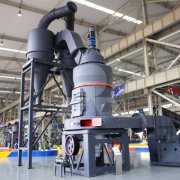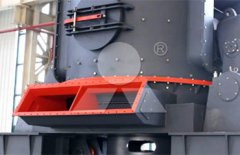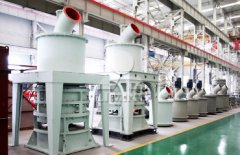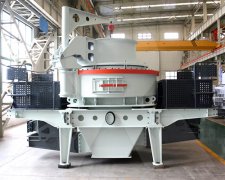How does the sand making machine adjust the fineness of the sand?
Sand making machines are used to produce artificial sand by crushing and shaping various types of rocks, stones, and minerals. The fineness of the sand refers to the particle size distribution of the sand grains. Adjusting the fineness of the sand produced by a sand making machine involves controlling the size of the particles to meet specific requirements for different applications. Here's how the fineness of the sand is typically adjusted in a sand making machine:
Adjusting the Feed Size: The size of the feed material entering the sand making machine can influence the fineness of the output. Finer feed material tends to produce finer sand, while coarser feed material results in coarser sand. By controlling the size of the feed material, operators can partially control the fineness of the sand.
Adjusting the Rotor Speed: Sand making machines have a rotating impeller or rotor that accelerates the feed material, causing it to collide with the stationary anvils or crushing chamber. The rotor speed can be adjusted to control the impact and crushing forces on the feed material. Higher rotor speeds generally result in finer sand, while lower speeds produce coarser sand.
Adjusting the Crushing Chamber Configuration: Some sand making machines allow for the adjustment of the crushing chamber configuration, such as the angle of the anvils or the distance between the rotor and the anvils. These adjustments can affect the particle size distribution of the output sand.
Use of Grading Equipment: After the initial crushing and shaping stages, the sand may go through additional processes involving grading equipment such as screens or air classifiers. These devices can separate the sand into different size fractions based on particle size. By selecting the appropriate screen or classifier settings, operators can control the final particle size distribution of the sand.
Controlled Material Composition: The composition of the feed material can also impact the fineness of the sand. Different rocks and minerals have varying degrees of hardness, brittleness, and abrasiveness, which can affect the crushing process and particle size distribution. By selecting suitable feed materials, operators can influence the sand's fineness.
Process Optimization and Testing: Achieving the desired sand fineness may involve a trial-and-error approach, where operators adjust various parameters and monitor the output sand quality. This iterative process helps optimize the machine's settings to achieve the desired fineness.
It's important to note that different types and models of sand making machines may have varying methods for adjusting fineness. Manufacturers provide guidelines and recommendations for adjusting the machine parameters to achieve the desired sand quality and particle size distribution for specific applications.
Recommended news
- Should the sand making machine production line be fixed or mobile?
- How to adjust the fineness of sand?
- The maintenance measures that improving the performance of sand making machines
- The advantages of mobile sand making machine
- What equipment is easy to use for pebble sand making machine?
- Which steel slag sand making machine is easy to use?




